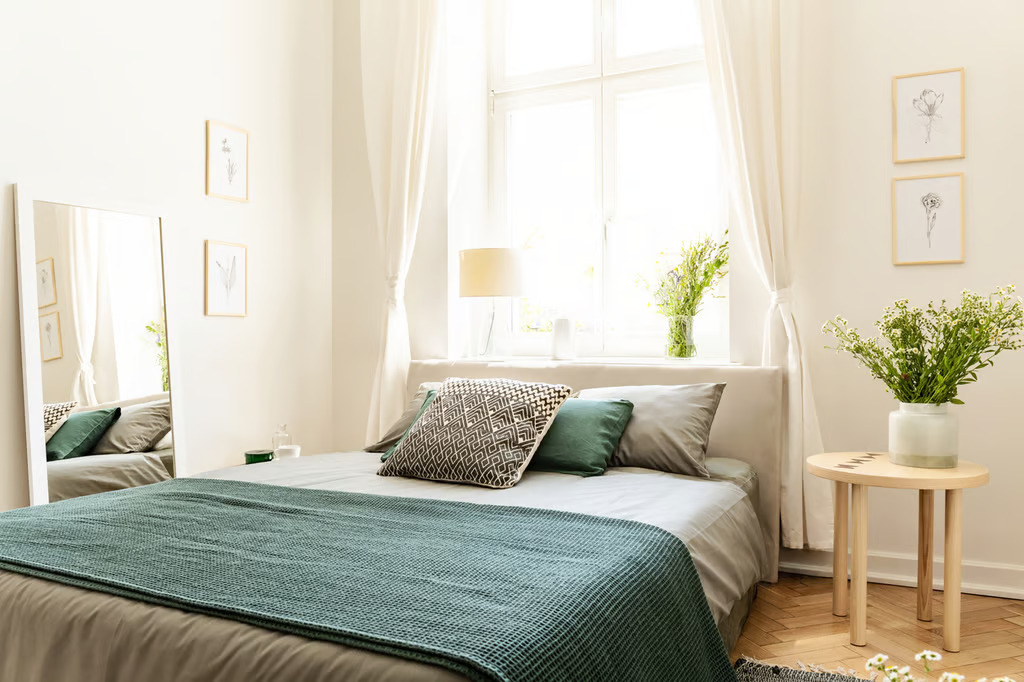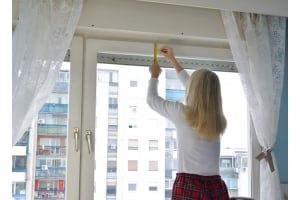How To Choose The Right Bedding For Spring and Summer

As the weather warms up and the days grow longer, it's time to refresh your bedding for spring and summer seasons. The right choice of bedding can make a significant difference in your comfort and sleep quality during these warmer months. In this blog, we will explore some essential factors to consider when selecting the perfect bedding for spring and summer, ensuring you stay cool, comfortable, and well-rested throughout the seasons.
Choose a Fabric That is Breathable and Wicks Away Moisture
When choosing a pillowcase, it is important to select a fabric that is breathable and moisture-wicking. This will help to keep you cool and comfortable throughout the night. Here are some of the best fabrics for pillowcases:
- Cotton: Cotton is a popular choice for pillowcases because it is highly breathable and allows for good airflow. It is also known for its moisture-wicking properties, absorbing moisture from your skin and promoting evaporation.
- Linen: Linen is a natural fabric that is lightweight and breathable. It has excellent moisture-wicking abilities, absorbing moisture quickly and releasing it into the air, which helps keep you cool and comfortable.
- Bamboo-derived fabrics: Fabrics made from bamboo, such as bamboo rayon or bamboo lyocell, are known for their breathability and moisture-wicking properties. They have a silky-smooth feel and offer excellent ventilation, allowing for enhanced airflow and moisture absorption.
- Tencel™: Tencel™, also known as lyocell, is a fabric made from wood pulp. It is highly breathable and has excellent moisture-wicking capabilities, keeping you cool and dry throughout the night. Tencel™ is known for its softness and smooth texture, providing a luxurious feel.
When choosing a pillowcase, look for these fabrics and check the product description to ensure they offer breathability and moisture-wicking properties. Additionally, consider the weave of the fabric, such as percale or sateen, as this can also impact its breathability.
By opting for a pillowcase made from a breathable and moisture-wicking fabric, you can promote airflow, regulate temperature, and keep moisture at bay, contributing to a comfortable and refreshing sleep experience.
Consider The Weight of Your Bedding For Summer and Spring Seasons
The weight of your bedding is one of the most important factors to consider when creating a comfortable and restful sleep environment. The right weight of bedding can help you sleep soundly and wake up feeling refreshed. Here are a few things to keep in mind when choosing the right weight for you:
- Climate and season: In warmer weather, you may prefer lighter-weight bedding to prevent overheating, while in colder seasons, you might opt for heavier bedding to provide warmth and insulation.
- Personal preference: Some individuals enjoy the feeling of being cocooned in heavier blankets, while others prefer the lightness and breathability of lighter bedding. Experiment with different weights to find what feels most comfortable for you.
- Allergies or sensitivities: If you have allergies or sensitivities, it's important to choose bedding that is suitable for your specific needs. Some individuals may find that heavier bedding retains more dust or allergens, while lighter bedding can be easier to clean and maintain.
- Material and construction: The weight of your bedding can be influenced by the materials and construction techniques used. For example, down-filled comforters or heavier duvets may provide a warmer and heavier feel, while lightweight quilts or coverlets offer a lighter touch. Consider the materials and construction of your bedding to determine the weight that suits you best.
- Layering options: Another approach is to have a combination of bedding options that can be layered according to your preferences and the temperature. This allows you to adjust the weight by adding or removing layers to achieve the desired level of comfort.
Ultimately, finding the right weight of bedding is a personal choice. Consider factors such as climate, personal preference, allergies, and the materials used to make an informed decision. By selecting bedding with an appropriate weight, you can create a comfortable and cosy sleep environment that suits your needs throughout the year.
Think About The Colour of Your Bedding For Summer and Spring Seasons
The colour of your bedding can have an impact on the perceived temperature and overall comfort of your sleep environment. Lighter colours, such as whites, pastels, and neutrals, tend to reflect heat and sunlight, creating a cooler and more refreshing feel. Darker colours, such as deep blues, greys, and black, absorb more light and heat, creating a warming effect.
Patterns and prints can also impact the perceived temperature of your bedding. Busy patterns and densely printed designs can create a visual effect that makes the bedding appear warmer or more insulated, even if the colour itself is light. On the other hand, light and airy patterns can contribute to a cooler visual effect.
Ultimately, the best colour of bedding for you will depend on your personal preferences and the climate in which you live. If you tend to get hot at night, you may want to choose lighter-coloured bedding with simple patterns. If you tend to get cold at night, you may want to choose darker-coloured bedding with more intricate patterns. You can also experiment with different colours and patterns to find what works best for you.
Choose Bedding That is Hypoallergenic If You Have Allergies
If you have allergies, it is highly recommended to choose hypoallergenic bedding. Hypoallergenic bedding is made from materials that are less likely to trigger allergic reactions, such as organic cotton, bamboo, or microfiber. It also has a tightly woven fabric or special allergen-barrier encasements that prevent allergens from penetrating the bedding.
Additionally, hypoallergenic bedding is often treated with anti-microbial or anti-allergenic properties to inhibit the growth of bacteria and mold. And because it is easy to clean, regular laundering can help remove allergens.
Here are some things to consider when choosing hypoallergenic bedding:
- Materials: Look for bedding made from hypoallergenic materials such as organic cotton, bamboo, or microfiber.
- Allergen barrier: opt for bedding with tightly woven fabric or special allergen-barrier encasements.
- Anti-microbial and anti-allergenic properties: Some hypoallergenic bedding may have additional features such as anti-microbial or anti-allergenic treatments.
- Easy to clean: Choose bedding that is easy to clean, as regular laundering helps remove allergens.
- Certifications: Look for bedding that carries certifications such as OEKO-TEX Standard 100 or asthma & allergy friendly® certification.
By selecting hypoallergenic bedding, you can create a sleep environment that minimizes allergens, reduces the risk of allergic reactions, and promotes better sleep quality for individuals with allergies. Remember to carefully read product descriptions and labels.
When choosing hypoallergenic bedding, there are a few additional tips to keep in mind. If you're unsure about the right type of bedding for your allergies, it's a good idea to consult with your doctor or an allergist who can provide guidance based on your specific needs.
Take your budget into consideration as hypoallergenic bedding can be pricier than regular bedding, but the investment may be worthwhile for allergy sufferers. Remember to wash your hypoallergenic bedding regularly in hot water to effectively remove allergens.
If you have pets, consider opting for hypoallergenic bedding specifically designed to protect against pet dander, providing an extra layer of defence against allergens.
Make Sure Your Bedding is Clean and Free of Dust Mites Before You Use It
Maintaining clean bedding is essential for a comfortable and healthy sleep environment, and it is indeed important to minimise dust mites. Here are some steps you can take to ensure your bedding is clean and free of dust mites.
- Wash your bedding regularly: Aim to wash your sheets, pillowcases, and blankets at least once a week in hot water. Dust mites cannot survive in high temperatures, so hot water helps eliminate them effectively. Use a gentle detergent to avoid irritating your skin.
- Encase your mattress and pillows: Invest in dust mite-proof covers for your mattress, pillows, and duvet. These covers are made of tightly woven fabric that prevents dust mites from penetrating. Be sure to select covers specifically designed to protect against dust mites.
- Vacuum your mattress and pillows: Regularly vacuum your mattress and pillows using a vacuum cleaner with a HEPA filter. This helps remove any dust mites, their eggs, and their waste that may have accumulated. Pay extra attention to seams, crevices, and tufted areas.
- Dry bedding thoroughly: After washing your bedding, ensure they are dried completely before putting them back on the bed. Dampness can create an environment conducive to dust mite growth, so make sure everything is thoroughly dried.
- Avoid excessive clutter: Dust mites thrive in cluttered areas, so try to minimise the number of unnecessary items, such as stuffed animals or decorative pillows, on your bed. This reduces the number of hiding places for dust mites.
- Keep humidity levels in check: Dust mites prefer humid environments, so maintain relative humidity below 50% in your bedroom. Use a dehumidifier if necessary to reduce moisture levels.
Final Words
By following these steps, you can significantly choose the right bedding for summer and spring seasons also, you can learn how to reduce the presence of dust mites in your bedding and create a cleaner sleeping environment for you and your loved ones.






